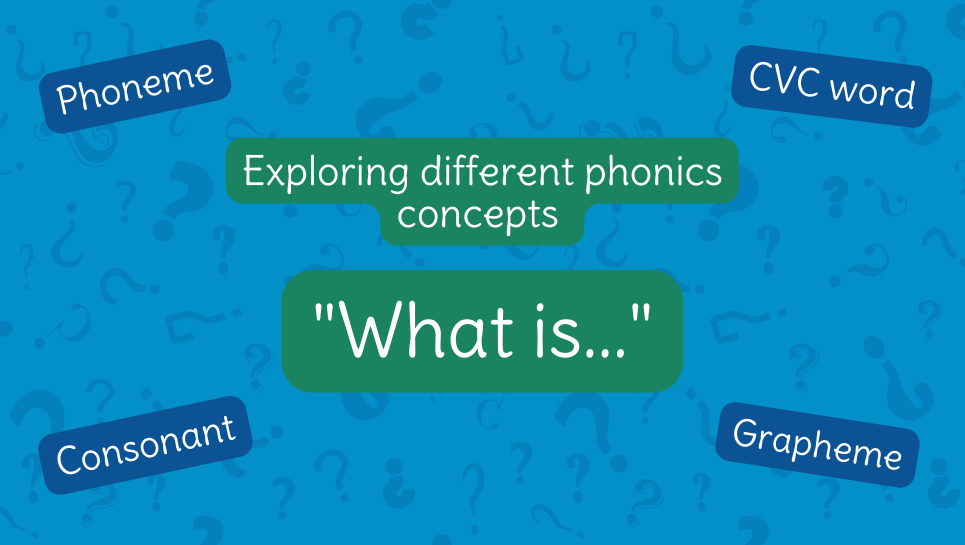In our ‘what is…’ series we’re taking things back to basics! From phonics to decoding, blending and more, we’re going to break things down and give you our expert advice on each area, to help answer any questions you may have around teaching reading.
***
A grapheme is a letter or several letters that represent a sound in our speech (phoneme). For example, the word ‘boat’ has three graphemes: ‘b’ ‘oa’ ‘t’. This is because the letters are linked to the sounds they represent: /b/ /oe/ /t/. The relationships between graphemes and phonemes are called Grapheme Phoneme Correspondences or GPCs.
What we need to know about English graphemes:
In English a grapheme can consist of 1, 2, 3 or 4 letters.
For example:
1-letter grapheme – m a t (m)
2-letter grapheme – sh i p (sh)
3-letter grapheme – n igh t (igh)
4-letter grapheme – eigh t (eigh)
What is a digraph?
A digraph is a 2-letter spelling (di-: two; graph: written symbol). There are consonant digraphs and vowel digraphs.
A consonant digraph is a 2-letter spelling that represents a consonant sound, e.g., ‘sh i p’.
A vowel digraph is a 2-letter spelling that represents a vowel sound, e.g., ‘ai’ in the word ‘r ai n’.
What is a trigraph?
A trigraph is a 3-letter spelling (tri-: three; graph: written symbol), e.g., ‘igh’ in the word ‘high’.
Why is this important?
When children learn to read and spell, they learn the relationships between sounds in words (phonemes) and how they are represented by letters (graphemes). Children learn to translate the graphemes on the page into phonemes and blend them into words when they read. This is called decoding. Decoding is a foundational skill of reading.
When children learn to spell, they convert the sounds they hear in words into graphemes (spellings) and write them to spell a word. This is called encoding. This is a foundational skill underlying spelling. The knowledge of grapheme/phoneme correspondences is essential for developing good decoding and encoding skills.
Check out our Phonic Infographics: Phonics explained to learn more!


